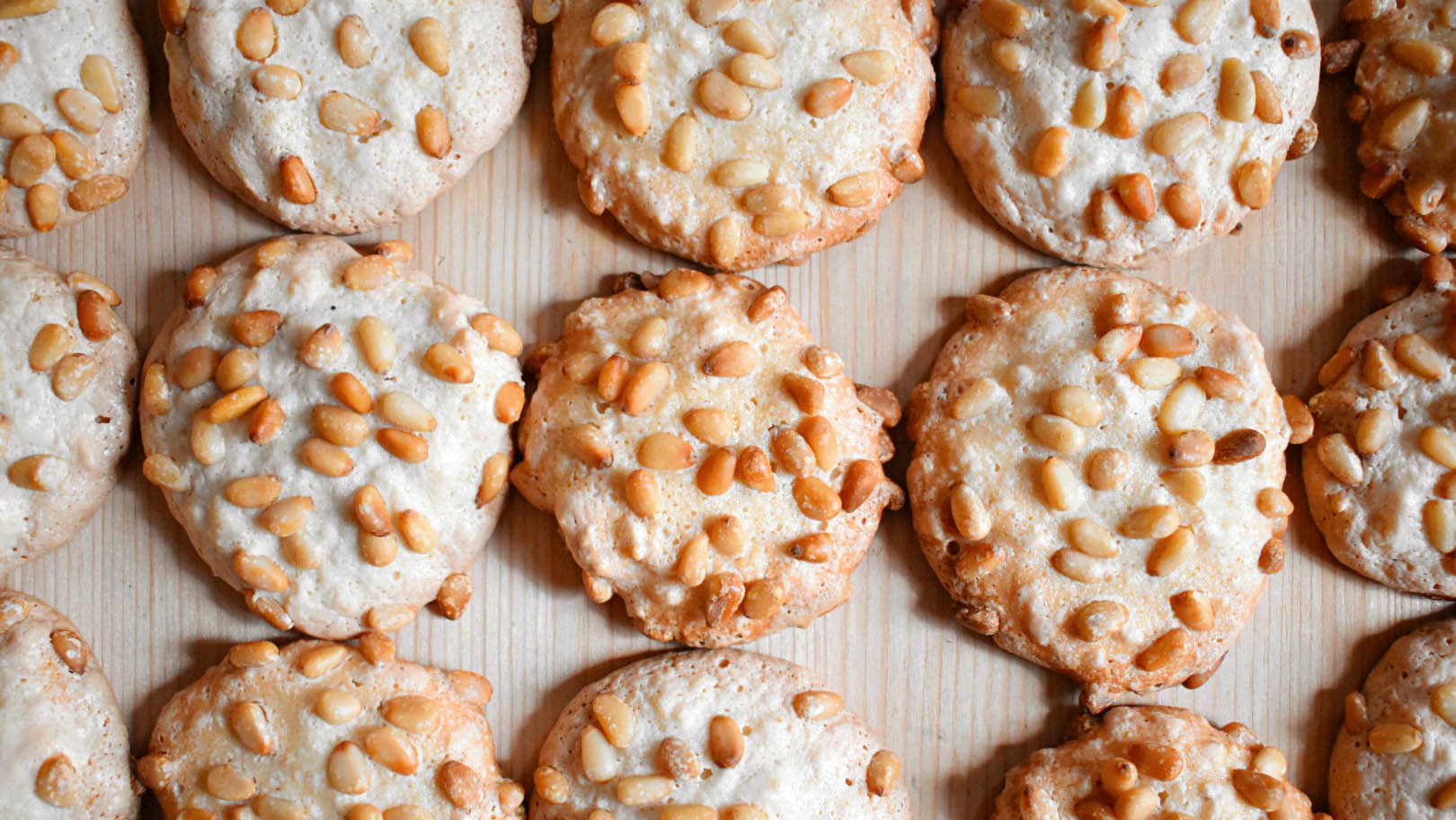For A Delicate And Expensive Holiday Gift, Leave The Jewelry And Bake The Pignoli
I did not grow up in a cookie-baking household. Slice-and-bake Toll House cookies were the norm, and I still think that few chocolate chip cookies are as good as the ones that come out of that bright yellow, sausage-like tube. Each December, though, we took to cookie-making as though Christmas would not occur if we didn't produce enough. Electric mixers were broken out of storage, and many, many types of cookies would be baked over the course of a few days. It was a thrilling time, one that I waited for every year—primarily because it was one of the rare times when I, a messy and uncoordinated child, was actually allowed to help out in the kitchen.
December was also the time of year when even the local A&P sold little green plastic baskets with four of five fruits shaped out of marzipan. I have been obsessed with marzipan and all things sweet and almond-flavored for as long as I can remember tasting things. So it should come as no surprise that I also love pignoli cookies. This standby of old-school Italian bakeries is pretty much made entirely of almonds and sugar (key ingredients in marzipan) and studded with pine nuts that get deliciously toasty in the oven. Of all the cookies we made around the holidays, these were my favorite.
I ate pignoli cookies whenever I could get my hands on them, which was often since I grew up between Brooklyn and the Jersey Shore, where Italian bakeries are plentiful. I particularly loved the ones from Ferrara Bakery in Manhattan's Little Italy, where they were always pillow-soft and had the perfect cookie-to-pine nut ratio. But homemade ones are something else entirely, because while they're still good days after baking, a warm pignoli cookie eaten directly off the baking sheet is heavenly. Paired with a cup of good coffee, few things are better.
Pignoli are considered to be a special occasion cookie in large part because they are not cheap to make. Both almonds and pine nuts are costly ingredients, and unless you live near an Italian specialty shop, the latter can be hard to find. I typically get mine from a butcher or salumeria, and I buy them in bulk, not just for cookie-making, but for salads and pasta dishes, too. You want to have at least a pint of pine nuts for making a full batch of pignoli cookies, because each cookie should have a lot of nuts.
Most recipes use almond paste as a starting base. However, almond paste can be even harder to find than pine nuts, and it's also unnecessarily expensive. You don't actually need it to make pignoli cookies—what you need is almond flour and a food processor.
When you use store-bought almond paste to make pignoli cookies, you have to go through this whole process of beating and breaking up the paste so that you can incorporate it into your cookie dough. If you make your own, you get to skip that step (you also miss out on the added preservatives). Since almond paste is made from sugar and ground almonds, which you'll already be using to make the cookie dough, it makes sense to just start the cookie-making process by making almond paste.
If you've been on a holiday baking spree and have egg whites left over from making custards or rich cookies and cakes that only use yolks, this recipe is a great way to use them up. Conversely, since these only use egg whites, you'll have some leftover yolks for those decadent chocolate chip cookie recipes that call for an extra yolk.

Pignoli Cookies
Makes approximately 2 dozen cookies
- 3 cups almond flour
- 4 egg whites
- 1 cup confectioner's sugar, sifted
- ½ cup white sugar
- ½ tsp. almond extract
- ¼ tsp. salt
- 1 cup pine nuts
In a food processor or high-speed blender, pulse almond flour, confectioner's sugar, and one egg white until a smooth paste forms.
In a large mixing bowl, whisk together remaining egg whites, salt, and white sugar until they are foamy—you don't need to whip to soft peaks. Fold in almond paste and almond extract. It can be tricky to incorporate, so if you're having trouble, use your hands to squeeze the mixture together. Cover and chill for at least 30 minutes.
Using a small cookie scoop or two teaspoons, make a 1" ball of dough. It will be sticky, even after chilling! Roll the dough in pine nuts until it is well-coated, and place on a baking sheet lined with parchment or a silicone mat. Be sure to leave at least 2-3 inches of space between cookies, as these do spread.
Bake at 350 degrees Fahrenheit until the edges are just set and the cookies are lightly golden. Cool on the pan for 3-4 minutes before transferring to a wire rack. These keep in a tin or airtight container at room temperature for up to two weeks.
